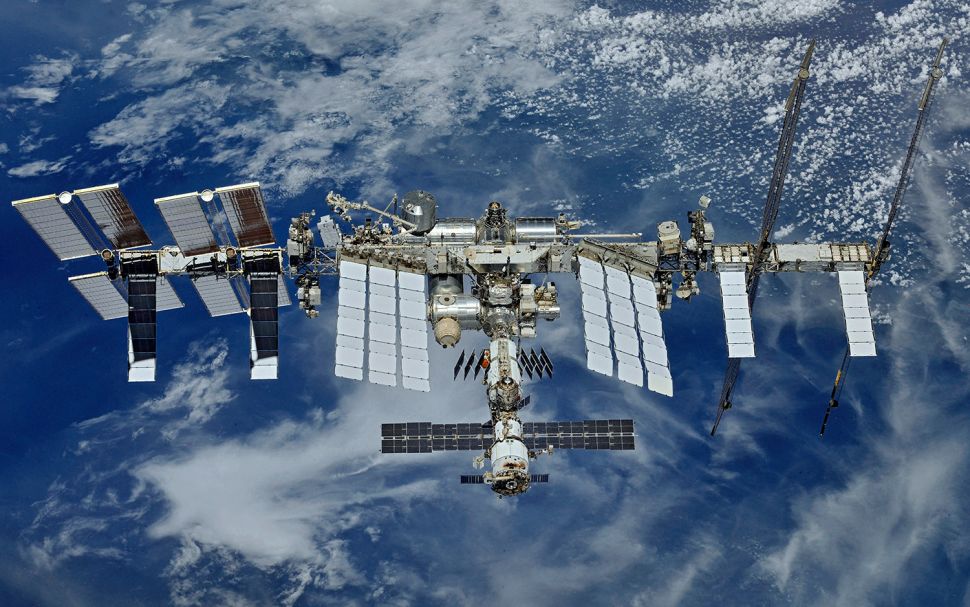NASA is planning future missions not only to send robotic landers as far as Europa but also land humans on Mars. To develop advanced aircraft capable of such long-duration missions, spacecraft thermal control technology needs to become more compact, have high efficiency, and have low weight and volume. Traditional thermal management systems have relied heavily on single-phase air and liquid cooling designs. However, these systems cannot meet the heat dissipation needs necessary for future long-term space missions.
We are exploring better thermal management systems for space systems by utilizing two-phase flows because of their higher heat transfer performance over single-phase flows. Our research spans from fundamental studies in two-phase flows to understand the effect of reduced gravity on boiling, condensation heat transfer and critical heat flux, to technology development investigations in terms of new innovative concepts for heat pipes relevant to in-space applications. Because these studies are helping us develop a better understanding of the effect of gravity, we are also interested in research in hypergravity which is relevant to fighter aircrafts.
Related Publications
[13] Y Qiu, H Lee, CR Kharangate, Computational investigation of annular flow condensation in microgravity with two-phase inlet conditions, International Communications in Heat and Mass Transfer 118, 104877. https://doi.org/10.1016/j.icheatmasstransfer.2020.104877
[12] LE O’Neill, I Park, CR Kharangate, VS Devahdhanush, V Ganesan, I Mudawar, Assessment of body force effects in flow condensation, part II: Criteria for negating influence of gravity, International journal of heat and mass transfer 106, 313-328. https://doi.org/10.1016/j.ijheatmasstransfer.2016.07.019
[11] I Park, LE O’Neill, CR Kharangate, I Mudawar, Assessment of body force effects in flow condensation, Part I: Experimental investigation of liquid film behavior for different orientations, International journal of heat and mass transfer 106, 295-312. https://doi.org/10.1016/j.ijheatmasstransfer.2016.05.065
[10] CR Kharangate, LE O’Neill, I Mudawar, Effects of two-phase inlet quality, mass velocity, flow orientation, and heating perimeter on flow boiling in a rectangular channel: Part 1–Two-phase flow and heat transfer results, International journal of heat and mass transfer 103, 1261-1279. https://doi.org/10.1016/j.ijheatmasstransfer.2016.05.060
[9] CR Kharangate, LE O’Neill, I Mudawar, Effects of two-phase inlet quality, mass velocity, flow orientation, and heating perimeter on flow boiling in a rectangular channel: Part 2–CHF experimental results and model, International journal of heat and mass transfer 103, 1280-1296. https://doi.org/10.1016/j.ijheatmasstransfer.2016.05.059
[8] CR Kharangate, H Lee, I Park, I Mudawar, Experimental and computational investigation of vertical upflow condensation in a circular tube, International Journal of Heat and Mass Transfer 95, 249-263. https://doi.org/10.1016/j.ijheatmasstransfer.2015.11.010
[7] CR Kharangate, Experimental, theoretical and computational modeling of flow boiling, flow condensation and evaporating falling films. https://docs.lib.purdue.edu/open_access_dissertations/783/
[6]CR Kharangate, C Konishi, I Mudawar, Consolidated methodology to predicting flow boiling critical heat flux for inclined channels in Earth gravity and for microgravity, International Journal of Heat and Mass Transfer 92, 467-482. https://doi.org/10.1016/j.ijheatmasstransfer.2015.08.018
[5] M Hasan, R Balasubramaniam, H Nahra, J Mackey, N Hall, ..., Performance Evaluation of the International Space Station Flow Boiling and Condensation Experiment (FBCE) Test Facility. https://ntrs.nasa.gov/citations/20170006574
[4] H Nahra, M Hasan, R Balasubramaniam, M Patania, N Hall, J Wagner, ..., Development and Capabilities of ISS Flow Boiling and Condensation Experiment. https://ntrs.nasa.gov/citations/20150023463
[3] I Mudawar, MM Hasan, C Kharangate, L O'Neill, C Konishi, H Nahra, ..., Flow Boiling and Condensation Experiment (FBCE) for the International Space Station. https://ntrs.nasa.gov/citations/20150023462
[2] H Lee, CR Kharangate, N Mascarenhas, I Park, I Mudawar, Experimental and computational investigation of vertical downflow condensation, International Journal of Heat and Mass Transfer 85, 865-879. https://doi.org/10.1016/j.ijheatmasstransfer.2015.02.037
[1] CR Kharangate, I Mudawar, MM Hasan, Experimental and theoretical study of critical heat flux in vertical upflow with inlet vapor void, International journal of heat and mass transfer 55 (1-3), 360-374. https://doi.org/10.1016/j.ijheatmasstransfer.2011.09.028


